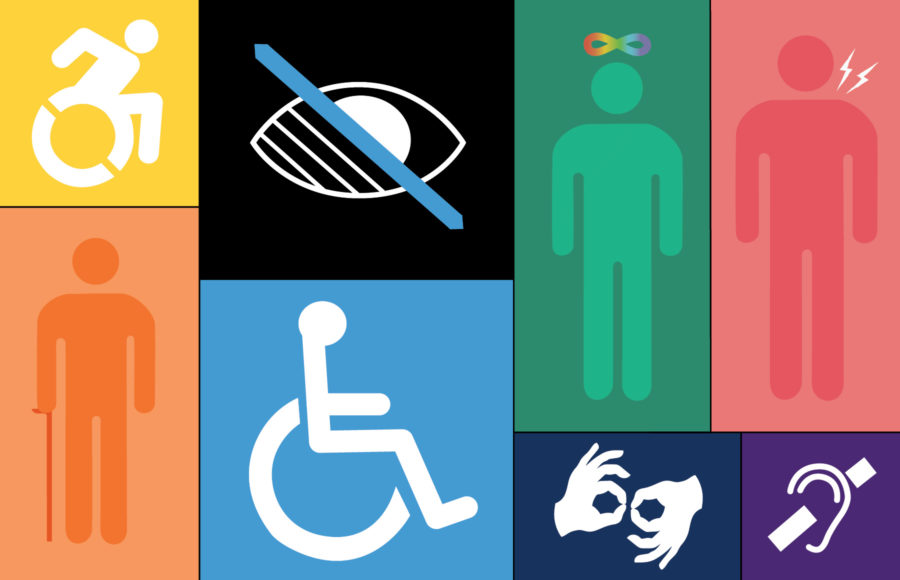Out of sight, Out of Mind: Why (Accurate) Disability Representation Matters
Author: Tanushree Kochar

December, 3rd is the International Day of Disabled Persons. Despite 15% of the population or around one billion people living with some kind of disability, the disabled community is often ignored and misrepresented. Just like representation of other communities, representation of the disabled is important in the media. The portrayal of society in the media often influences our actions and the biases we form. The disabled community is very obviously underrepresented in media and in the rare instance when they are represented, this is often done using typical stereotypes. People with disabilities are seen as “abnormal”, “pitiful”, and “charity cases”. However, it is important to view health issues, especially disabilities, with a sociocultural lens.
According to the Center for Disease Control, one in four people in the United States identifies as disabled, but of all roles in Hollywood Films, only about 2.5% portray a disability. Shockingly, 80% of these roles are played by non-disabled, able-bodies actors. This is not just a problem in the media, in fact, a large proportion of the disabled community in the United States is unemployed. This is an institutionalized issue wherein accommodations are not made for such a large population, the issues they have to face are ignored and hidden. When Sia, a well acknowledged Australian Singer known for her hits “Chandelier” and “Elastic Heart”, released the trailer for the movie “Music”, it was instantly hit with criticism for its casting. The main character of the film is a non-verbal teenager with autism, based on Sia’s neuroatypical friend. The role is played by Maggie Ziegler, who is not disabled. Many within the community felt that watching the trailer felt as if their disability was being mocked. Although there were some smaller roles played by disabled actors, proper representation is still lacking in the industry.
It is getting better though. In July this year, global pop stars BTS (방탄소년단) released their single “Permission to Dance”. The song quickly gained attention for inclusion of sign language in the main choreography. People of all ages, all communities, abled and disabled alike participated in the “Permission to Dance Challenge”, raising awareness about the Deaf Disability community and of the Disabled community as a whole. I remember, the day the song was released I found out that July is Disability Pride Month. One of my favorite details from the music video is a small poster in the office that says “disABILITY resources”. In my personal interpretation, it conveys the recognition of a disabled person being a capable person, while not forgetting their disability. I also read many tweets that disabled Armys (BTS Fandom) posted and shared about what the inclusion of these three simple dance moves meant for them. I found the twitter account Disabled Army Advocacy & Support Network⁷ (@DisabldARMY4BTS) through which I was able to educate myself about Disability Inclusion and Ableism. Another instance of impact of disability representation was earlier this month when the EastEnders actress Rose Ayling-Ellis, first deaf performer on the show Strictly Come Dancing, danced with the music cut off to present the everyday experience of a deaf person. The performance led to an increased interest in sign language courses in the UK.
There is a misconception that disabled people just wish they could be able-bodied or that their whole personality is built around their disability. Everyone’s experience is unique and it brings us back to the conclusion that seeing an increased number and more accurate representation of people with disabilities in the media is the first and very important step in improving treatment of and giving a proper space to the disabled community.
This article was written by an able-bodied person.
References:
BBC News. 2021. “Strictly Come Dancing Inspires Deaf Signing Course for Teens,” November 22, 2021, sec. Northampton. https://www.bbc.com/news/uk-england-northamptonshire-59374332.
“Disability Inclusion Overview.” n.d. Text/HTML. World Bank. Accessed November 28, 2021. https://www.worldbank.org/en/topic/disability.
“Disability Representation in Health Humanities – Toronto’s Stories of Health+illness.” n.d. Accessed November 28, 2021. https://www.utsc.utoronto.ca/projects/torontostorieshealth/2019/11/26/disability-representation-in-health-humanities/.
“Disabled ARMY Support & Advocacy.” n.d. Disabled ARMY Support & Advocacy. Accessed November 28, 2021. https://disabledarmy4bts.carrd.co.
Norlian, Allison. n.d. “Sia’s Trailer For ‘Music’ Struck A Nerve With The Disabled Community. Her Tweets Only Made Things Worse.” Forbes. Accessed November 28, 2021. https://www.forbes.com/sites/allisonnorlian/2020/11/24/sias-trailer-for-music-struck-a-nerve-with-the-disabled-community-her-tweets-only-made-things-worse/.
“Representation Matters: The Importance of Disabled Persons in Media.” 2021. Angel Guardians (blog). September 17, 2021. https://www.angelguardians.org/representation-matters-the-importance-of-disabled-persons-in-media/.
Ringland, Kate. 2021. “The Gift of Disability Inclusion.” Medium (blog). July 10, 2021. https://kateringland.medium.com/btss-gift-of-disability-inclusion-5495ad0067a9.